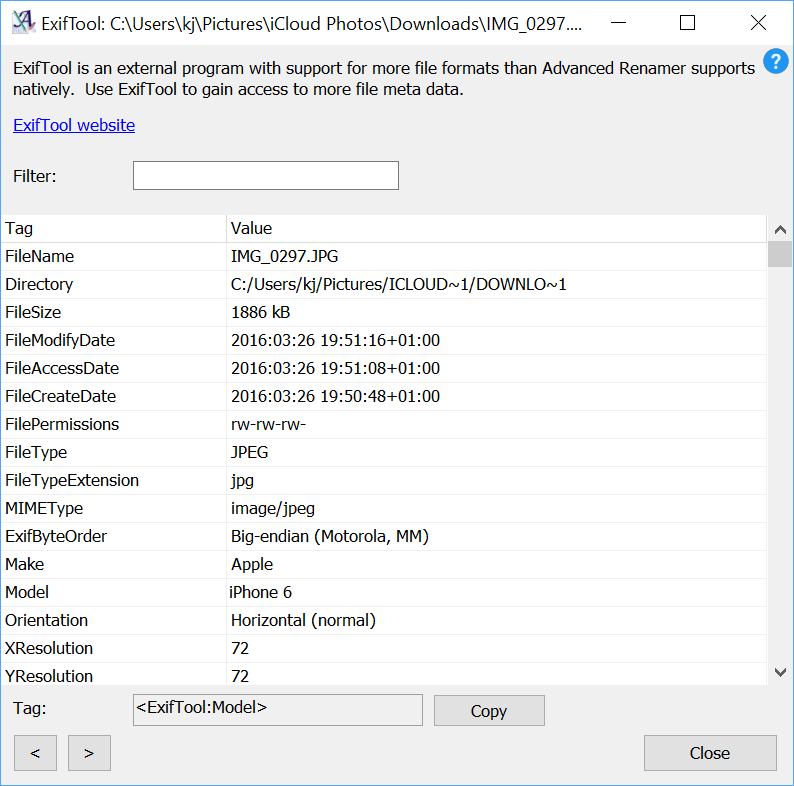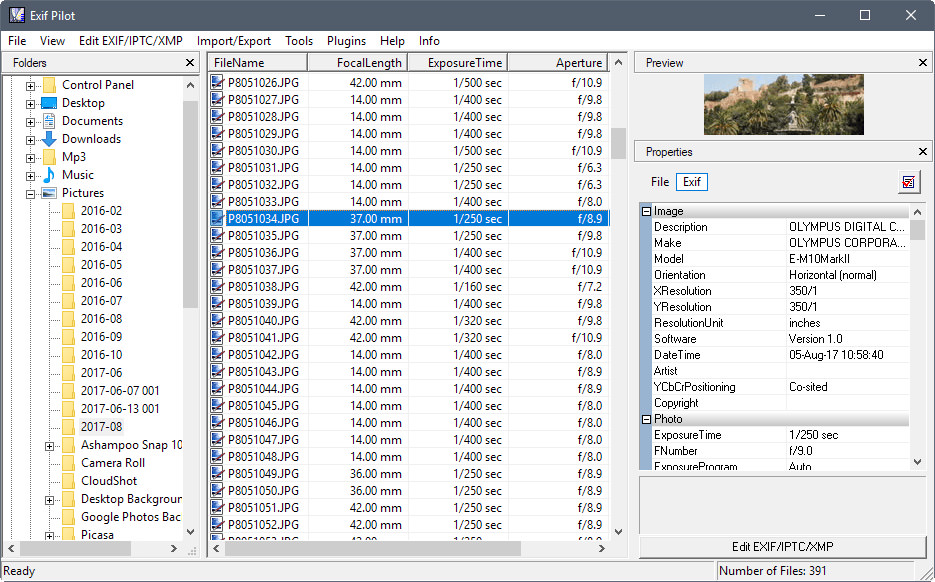
- USE EXIFTOOL TO RENAME FILES WITH CAMERA MODEL HOW TO
- USE EXIFTOOL TO RENAME FILES WITH CAMERA MODEL INSTALL
- USE EXIFTOOL TO RENAME FILES WITH CAMERA MODEL ISO
- USE EXIFTOOL TO RENAME FILES WITH CAMERA MODEL DOWNLOAD
- USE EXIFTOOL TO RENAME FILES WITH CAMERA MODEL WINDOWS
The first one is “Remove Person Info” and the second one is “Remove Location Info”. There are two important checkboxes that you might want to look into here. If “All Metadata” is selected, all EXIF data will be embedded into the resulting JPEG image. There is a “Metadata” field here, which is what describes the EXIF data that will be extracted with the image.
USE EXIFTOOL TO RENAME FILES WITH CAMERA MODEL WINDOWS
If you are using a Windows OS, simply right-clicking the image and clicking the “Details” tab will reveal some information, as you can see below: Let’s first take a look at how you can use your operating system to view EXIF data. However, if images are already on your computer, a dedicated photo viewer application or your OS tools will probably be the best way to go.


USE EXIFTOOL TO RENAME FILES WITH CAMERA MODEL DOWNLOAD
This method can be a bit slower than the above two for viewing images online because you will need to first download images, then use the photo viewer or your OS to view the EXIF data.
USE EXIFTOOL TO RENAME FILES WITH CAMERA MODEL INSTALL
If for whatever reason you do not want to install a browser add-on, or perhaps you want to be able to view this data on existing images on your computer, you can also use a separate photo viewer application or the built-in capabilities of your operating system.
USE EXIFTOOL TO RENAME FILES WITH CAMERA MODEL HOW TO
How to View EXIF Data in OS and with a Photo Viewer All the common exposure, camera, date and other information is provided in the “EXIF” section of the extension. For example, some image viewers and post-processing tools like Lightroom are capable of viewing and extracting such information in order to properly organize images, while some operating systems are capable of reading and displaying this data.Īs you can see, this tool provides quite a bit of useful information, including a histogram. Instead, EXIF data is embedded in the physical file, and specific tools that are capable of reading this information must be used to view it. While many photographers choose to retain EXIF data in their images, this information does not show up when looking at photos through web browsers, because it is not part of the actual image. Those, who leave this data in their images either have no idea that they even have it, or they intentionally leave it like I do – for others to see and possibly learn from. In addition, some photographers choose to strip EXIF data from their images to protect their work and their style, while others do it to save website traffic (yes, EXIF does add up to the size of the file). Unfortunately, though, the only web-friendly (in terms of size) file format that can handle EXIF is JPEG, which means that you often cannot read the data from other image formats such as GIF and PNG.
USE EXIFTOOL TO RENAME FILES WITH CAMERA MODEL ISO
Such stored data is called “EXIF Data”, and it is comprised of a range of settings such as ISO speed, shutter speed, aperture, white balance, camera model and make, date and time, lens used, focal length, and much more.īeing able to read such data can be of great importance not only for beginners but also for other photographers who want to find out what settings and tools were used to create a particular photograph.

These settings can then be later used to organize photographs, perform searches, and provide vital information to photographers about the way a particular photograph was captured. Nowadays, every modern digital camera has the capability to record this information, along with many other camera settings and other relevant data, right into photographs. It was a very painful process, especially for newbies who wanted to understand what they did wrong when an image didn’t come out right. They would then use this information in the lab, going through one picture at a time, hoping that what they wrote actually corresponds to the right image. It is capable of storing such important data as camera exposure, date/time the image was captured, and even GPS location.īack in the early film days, photographers were forced to carry a pen and a notepad with them to record important information such as shutter speed, aperture, and date.


 0 kommentar(er)
0 kommentar(er)
